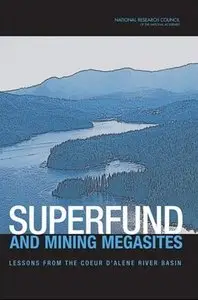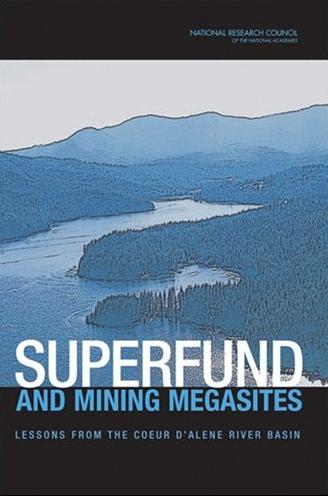Committee on Superfund Site Assessment and Remediation in the Coeur d' Alene River Basin and National Research Council, "Superfund and Mining Megasites"
Publisher: National Academies Press | ISBN: 0309097142 | edition 2005 | PDF | 505 pages | 3,78 mb
Publisher: National Academies Press | ISBN: 0309097142 | edition 2005 | PDF | 505 pages | 3,78 mb
For more than 100 years, the Coeur d and Alene River Basin has been known as 'The Silver Valley' for being one of the most productive silver, lead, and zinc mining areas in the United States. Over time, high levels of metals (including lead, arsenic, cadmium, and zinc) were discovered in the local environment and elevated blood lead levels were found in children in communities near the metal-refining and smelter complex. In 1983, the US Environmental Protection Agency (EPA) listed a 21-square mile mining area in northern Idaho as a Superfund site. EPA extended those boundaries in 1998 to include areas throughout the 1500-square mile area Coeur d'Alene River Basin project area.Under Superfund, EPA has developed a plan to clean up the contaminated area that will cost an estimated $359 million over 3 decades - and this effort is only the first step in the cleanup process. "Superfund and Mining Megasites: Lessons from Coeur d'Alene River Basin" evaluates the issues and concerns that have been raised regarding EPA's decisions about cleaning up the area. The scientific and technical practices used by EPA to make decisions about human health risks at the Coeur d'Alene River Basin Superfund site are generally sound; however, there are substantial concerns regarding environmental protection decisions, particularly dealing with the effectiveness of long-term plans.





